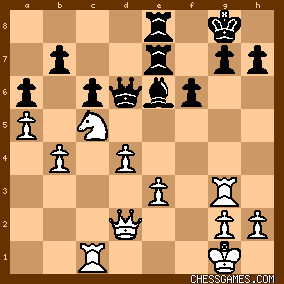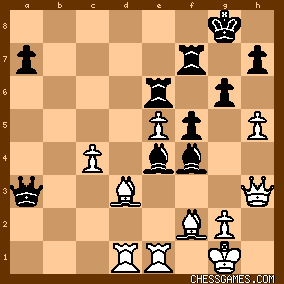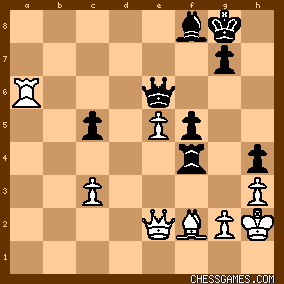|
From 8th January to 1st February, Akiba Rubinstein and Efim Bogoljubov contested a febrile match which took place in Stockholm and Gothenburg chess clubs, Sweden. (1) After the devastation of the First World War, there was little opportunity for grandmaster tournaments across an exhausted Europe. One exception was Sweden whose neutrality had allowed it to sell raw materials and manufactured goods in a seller's market at premium prices. Consequently, in the immediate post-war years Sweden became a hub of European chess activity. Aron Nimzowitsch, Bogoljubov, Richard Reti, Rudolf Spielmann and Rubinstein all spent considerable amounts of time in the country in 1919-1920. Bogoljubov
There were three strong tournaments in Sweden during this period: Stockholm (1919), Gothenburg (1920) and Stockholm again in 1920. Bogoljubov played in each and showed he was in good form. In the first Stockholm tournament, he was first ahead of Spielmann and Réti. (2) In Gothenburg he was third behind Réti and Rubinstein (in a strong field of mostly central European masters), and he was first again in Stockholm (1920). He also played two matches of which this was the first; in the second - Bogoljubov - Nimzowitsch (1920) (1st to 7th of September) - he defeated Nimzowitsch. Bogoljubov's rating had risen rapidly since 1915, whilst Rubinstein's had fallen. Before the war, Bogoljubov would have had little chance in such a match, but 1920 was a new and a different time. (3) The match gave Bogoljubov a reputation and exposure he had not previously enjoyed. "Mr A. J. Mackenzie ... remarks: "(Bogoljubov)'s fine play enables us to understand how this comparatively new master has stepped quickly into the front rank professional experts". (4) Rubinstein
"... is the greatest artist amongst chess players .. with Rubinstein all is refined tranquillity; for with him in building up his game the position given to every piece is the necessary one. It is not a matter of a fight for him (the contrast here is clearly with Lasker), but the working out of a victory, and so his games create the impression of a great structure from which no stone dare be lifted." (5) Rubinstein played in only the occasional domestic tournaments in Poland during the war, but as the war ended he played in several very strong events in Germany. In January 1918, he defeated Carl Schlechter in a close match (+2 =3 -1). His form collapsed in a quadrangular tournament in Berlin (Berlin Four Masters (1918) (April - May)) where he scored only two draws out of eight games. In a second Berlin quadrangular tournament - Berlin Grandmasters (1918) (September) - he greatly improved, coming second to the world champion Emanuel Lasker. Rubinstein's form continued to be unpredictable in a manner which had rarely been seen in his pre-war performances. He was only a distant third in the 1919 Warsaw City Championship, losing to tail-enders. After the First World War, Rubinstein continued to be a top ten player until 1933 (6) but his highest rating and best individual performances remained in the past. The new "hyper-modern" chess was not to his taste and the new opening ideas of the 1920's did not feature in his repertoire. Nevertheless, he still remained a leading master and a formidable competitor. The new guard of Réti, Savielly Tartakower, Nimzowitsch and Ernst Gruenfeld all had negative life-time scores against him. Only Bogoljubov had an equal lifetime score. (7) Results
This was a hard-fought match; only three of the twelve games were drawn. Rubinstein won by a margin of one game. Both players had difficulty in defence, Rubinstein losing three times defending against the Four Knights and Bogoljubov only scoring one win out of six games with Black. 1 2 3 4 5 6 7 8 9 0 1 2
Rubinstein 1 1 0 0 ½ 1 0 1 0 ½ 1 ½ 6½
Bogoljubov 0 0 1 1 ½ 0 1 0 1 ½ 0 ½ 5½
Progressive score: 1 2 3 4 5 6 7 8 9 10 11 12
Rubinstein 1 2 2 2 2½ 3½ 3½ 4½ 4½ 5 6 6½
Bogoljubov 0 0 1 2 2½ 2½ 3½ 3½ 4½ 5 5 5½
Bogoljubov had White in the odd-numbered games.The games
Game 1. This was a game Bogoljubov should have won after a blunder by his opponent. 
click for larger view31.Ne4! Qc7 32.Nxf6 wins. Instead, Bogoljubov after missing this winning line then blundered his Q-side pawns away. Game 2. From an equal but sharp position, Rubinstein outplayed his opponent, finally killing him off with a temporary exchange sacrifice: 
click for larger view39.Rxe4!
Game 3. Although two games down, Bogoljubov played aggressively against Rubinstein's patent 4...Nd4 defence against the Four Knights. Rubinstein blundered in the complications allowing Bogoljubov to his opponent's Queen with a Knight fork combination. Defending against the Four Knights was to be a surprising problem for Rubinstein in this match. 
click for larger viewRubinstein's preference for 5...Nxe4 rather than Qe7 proved an unhappy choice in this match. He lost games 3, 7 and 9 trying to justify this variation. Yet, Rubinstein did not lose faith in his system, and given the opportunity to play it once more, he improved the variation in Spielmann vs Rubinstein, 1925 and won. Like Wilhelm Steinitz before him, Rubinstein was prepared to pay to defend his principles when it would have perhaps been pragmatic to choose another variation. Game 4. For the second game in a row, Bogoljubov, with Black, outplayed Rubinstein in a complex position so tying the score. Rubinstein's K-side attack collapsed and Bogoljubov's pieces flooded in to win in 33 moves. Game 5. This game gave the impression it would be the steadiest of the match so far. Rubinstein defended with an Open Ruy Lopez and neither side disturbed the equilibrium but then from move 33 both players suddenly made a succession of unforced errors. Perhaps this was time-pressure, but the players both having made and missed various blunders the game ended in a draw. Game 6. Faced with a Colle system for the second time in the match, Bogoljubov deviated from Game 4. Unfortunately, he lost a pawn and the initiative went decisively to his opponent. Game 7. Once again Rubinstein lost on the Black side of Four Knights. This time it was not a quick combinational kill; instead, Bogoljubov outplayed Rubinstein in the endgame which was one of Rubinstein's greatest areas of proficiency. The match was now tied. So far only one game had not been decisive. Game 8. Rubinstein bounced back with a sparkling finish: 
click for larger view42.Nxc4! Ka8 43.Rfd7! Qxc4 44.Qxh8!
Game 9. Bogoljubov only took 22 moves to defeat his opponent whose defence to the Four Knights again was made to appear fragile. Rubinstein in this match showed a vulnerability to tactical play against the highest level opponent (hence his poor score (-6) against Alekhine in the 1920's and 1930's). Game 10. This lengthy game was marred by both players overlooking several simple but effective tactical blows. For instance: 
click for larger view44...Nxg4! and successive moves. It appears that the players were tired, but whether Rubinstein in particular would have played so poorly before the war is a moot point. Game 11. Once again a simple tactical oversight decided the game: 
click for larger view42...Rxf2! and Rubinstein won.
Game 12. Rubinstein could have won by a larger margin had he found 
click for larger view53.Rxd4! Rxf2 54.Rxf2 Rxf2+ 55.Kh3, which would have won. Notes
(1) American Chess Bulletin, vol. 17, p. 94.
(2) Tidskrift för Schack, December 1919, p. 226.
(3) See Edo Historical Chess Ratings, http://www.edochess.ca/matches/m232....
(4) Falkirk Herald, Wednesday 29th September 1920, p. 4.
(5) Modern Ideas in Chess, by Richard Reti, p. 95.
(6) See http://www.chessmetrics.com/cm/CM2/...
(7) See User: RubinsteinScores. This was cloned from an original collection by User: Karpova. Text and original research by User: Chessical.
| 



![]()
